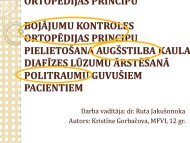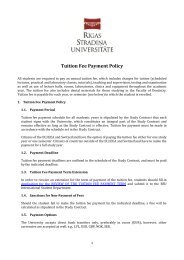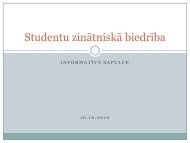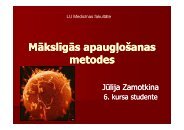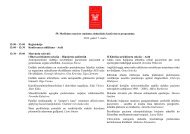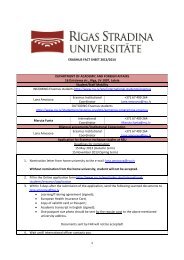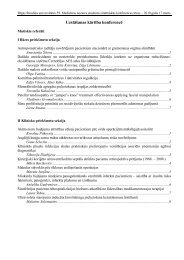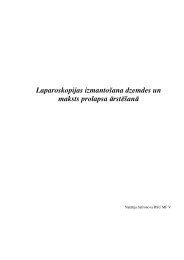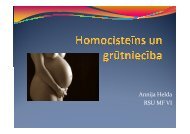History of Latvia: a Brief Survey
History of Latvia: a Brief Survey
History of Latvia: a Brief Survey
- No tags were found...
You also want an ePaper? Increase the reach of your titles
YUMPU automatically turns print PDFs into web optimized ePapers that Google loves.
Pope Alexander VI to issue a crusading bull against the Russians. Finally he made peace withGrand Prince Ivan III <strong>of</strong> Muscovy in Pskov in 1503, but with no territorial changes. Plettenbergcan be considered one <strong>of</strong> the most gifted political leaders <strong>of</strong> Livonia.After Martin Luther posted his theses in 1517, Lutheran ideas began to emerge in Livonia. Inthe early 1520s Rīga became an important centre <strong>of</strong> Reformation ideas in Northern Europe.By the mid-16th century Lutheranism had become dominant among ruling elites.After the so-called Livonian War (1558-1583) — a lengthy military conflict between Russiaand its western neighbours for control <strong>of</strong> present-day <strong>Latvia</strong> and Estonia — <strong>Latvia</strong>n territorycame under Polish-Lithuanian rule. The confederation <strong>of</strong> Livonia ceased to exist. The ones tobenefit most from the new political situation were the knights <strong>of</strong> the <strong>of</strong> the Livonian Order. In1562 the Order was secularised, and its last master Gotthard Kettler (1517-1587) became theduke <strong>of</strong> a new province called Courland-Semigallia (abbreviated Courland, today Kurzeme-Zemgale).Free city <strong>of</strong> Rīga 1 Schilling, 1570.An old map <strong>of</strong> Livonia, firstpublished in 1573.An old map <strong>of</strong> Livonia, firstpublished in 1573.The coat <strong>of</strong> arms <strong>of</strong> Rīga, 1586.11



